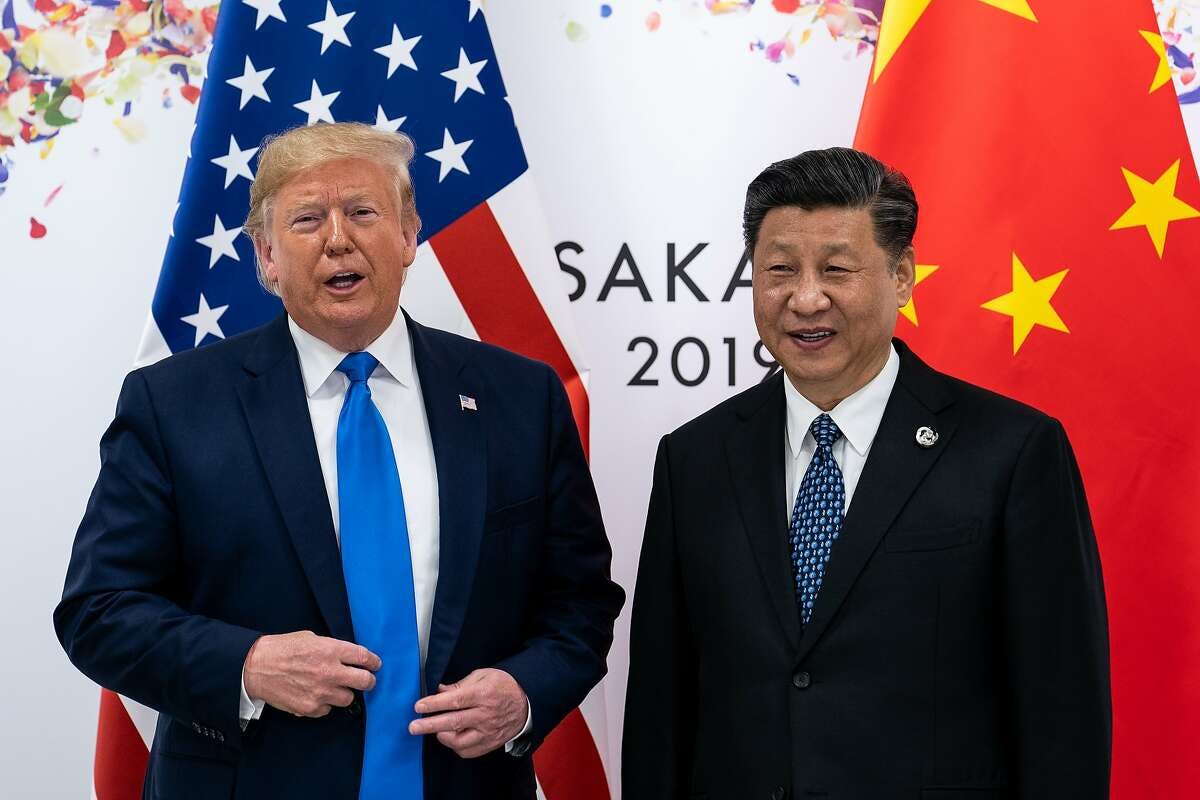
How history can instruct the way on US-China relations
With U.S.-China relations on the verge of escalating into a Cold War-style confrontation, a look back at the San Francisco of 150 years ago may help illuminate a way out of the seemingly intractable mutual distrust that is at the heart of the conflict.
That history can be found in the place where Giants fans go to enjoy their newly renamed ballpark. Since the city maps of 1869, that spot has been known as China Basin, as a nod to the stream of ships that arrived from China in that decade — including the one that carried Anson Burlingame, for whom that leafy suburb to the south was named.
In 1861, President Lincoln appointed Burlingame, a former congressman, as his envoy to China.
Until that time, economic disputes between China and Western nations, including the U.S., had been resolved by using force to compel China to accept unfair trade agreements that included territorial concessions. With help from European diplomats, Burlingame led the way in establishing the so-called Cooperative Policy. The U.S. would henceforth treat China in the same manner as other nations, upholding its sovereignty and territorial integrity, with commitments not to interfere in its internal affairs.
This revolutionary new approach could never have been cemented into law without a remarkable twist of diplomacy. In 1867, at the suggestion of top Chinese officials, Burlingame resigned from his post and with U.S. blessing, was appointed as the envoy to represent China to the U.S. and Europe. In 1868, his team of diplomats docked in San Francisco — in China Basin — en route to change history.
Burlingame embarked on a campaign-style tour of the U.S., using his superb oratorical skills to preach the gospel of the mutual benefits that would flow from Chinese cooperation with America. He emphasized that the cultural values of China and the West were compatible, and argued that America would reap vast economic benefits from being fair to China.
And then, when Burlingame reached Washington, Congress and the country were obsessed with the upcoming vote on President Andrew Johnson’s impeachment. Normal diplomacy was impossible, as every issue was scrutinized for its role in the impeachment drama. But by using private meetings without public discussion, he negotiated the Burlingame Treaty, with its vision of equal treatment for immigrants and bilateral economic benefits.
That political distraction is not the only parallel to 2019; in our own time, the U.S. has reverted to the use of coercion in the U.S.-China relationship, this time economic in nature. In a break with policies of his predecessors, President Trump is trying unilateral tariffs and sanctions outside of the WTO framework to compel China to agree to a revised trade deal. This dramatic policy shift has found support in large segments of both parties due to the public’s rising fear and distrust of China.
But even though public opinion has given the Trump administration the license to revert to coercive measures, we should be wary of where that mandate leads us. Even if Trump succeeds in getting a deal with China, its benefits could prove ephemeral. An economic shock such as 2008 or violations by China could turn public opinion against the agreement and ricochet our nations into an even more confrontational posture.
There is a real danger of being trapped in a loop — negative views of China lead to harsher punitive policies that in turn strengthen those negative views. We’ve seen this movie before — the hard economic times of the 1870s accelerated the widespread animosity toward Chinese immigrants and intensified the nativist impulses of the day. That led both parties to support anti-Chinese measures, which culminated in the replacement of the Burlingame Treaty with the infamous Chinese Exclusion Act of 1882. In our time, similar fears could grip our society and increase the risk of war.
The easy answer is to wish and hope that China stops violating its agreements and starts engaging in fairer economic behavior. But a true rapprochement will require a more sophisticated understanding of both nations’ history if we are to avoid the path of confrontation. And as we were 150 years ago, we must again be receptive to new methods to achieve grand goals.
Twenty-first century technology can help ensure our two peoples understand each other in a way that was unthinkable in 1868. We have yet to truly take advantage of this technology, and doing so at the current crossroads will call for leaders as creative as those of 1868. If we can break through the distrust and reach a more harmonious modus vivendi, perhaps this time we can avoid repeating the undoing of Burlingame’s vision.

